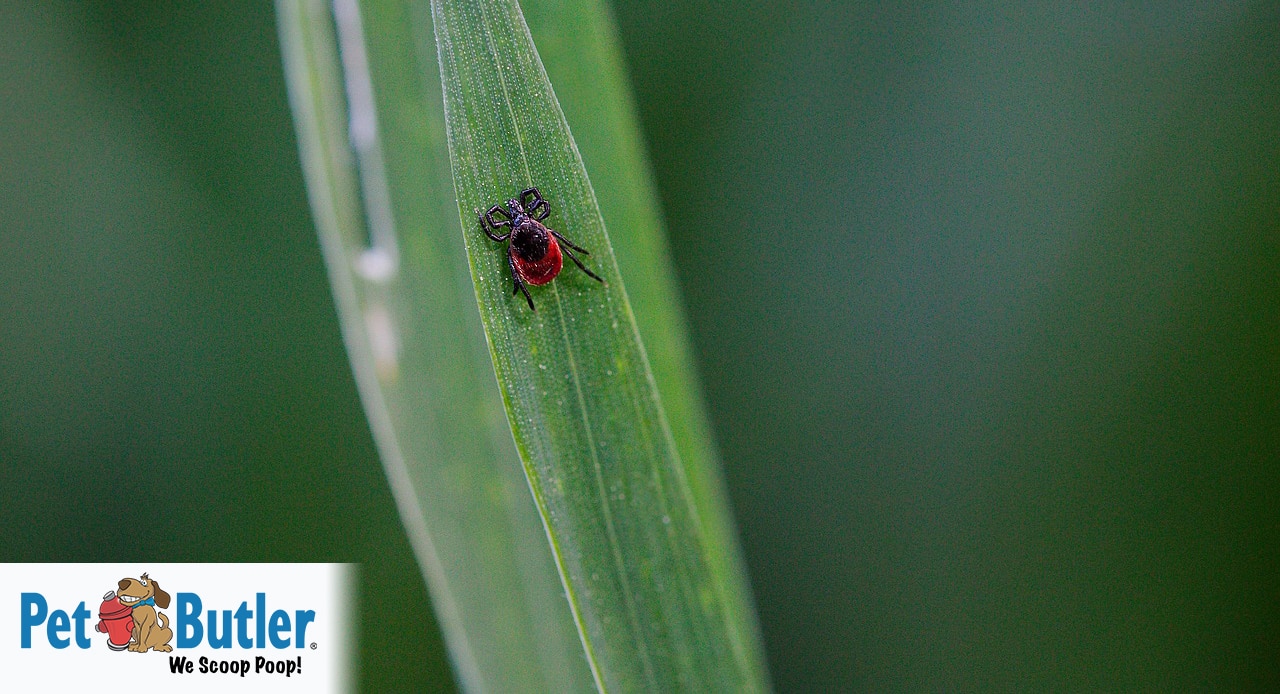We’ve previously talked about the presence of fleas and ticks in the environment, and both local and national news have drawn attention to the fact that this year we are seeing an even greater abundance of these pesky parasites. Fleas and ticks cause topical irritation at the site of the bite, there is the huge “ick” factor of knowing these parasites are out and about, but the primary concern is the diseases they transmit to unknowing hosts. Lyme disease, in particular, has drawn broad attention from organizations such as the Centers for Disease Control and American Veterinary Medical Association. The CDC reports that there are over 30,000 new cases of Lyme disease reported every year. In dogs, we are seeing upwards of high number of cases of reported Lyme disease. The term “reported” is important here, as many cases of Lyme disease are not identified in both humans and canines. A great pretender, signs and symptoms can be subtle, shift, and diagnosis and treatment can be confounding.
Symptoms and Causes of Lyme Disease
Lyme is caused by the transmission of the bacterium Borrelia burgdorferi from the deer tick or black-legged tick species. The tick requires two years and a blood meal at each stage to complete their life cycle from egg to larvae to nymph to adult. The source of the first blood meal can be a mouse, bird, or other small mammal and if infected with the bacteria, will pass the disease on through the blood to the host tick. If the affected tick then bites a human or dog and attaches for over 48 hours, the unsuspecting animal may become infected with the Borrelia organism.
In dogs, only 10% of dogs infected with the bacteria show signs and symptoms of Lyme disease illness; owners may be surprised by the results of their pet’s annual screening test. Often incorporated as part of a yearly preventative protocol that may include fecal and other blood testing as well as an examination and any recommended vaccinations, testing for the presence of antibodies to the lyme bacteria is recommended. In New England, 50-75% of dogs may test positive for lyme antibodies (independent of lyme vaccination) according to MSPCA.
Signs of Lyme disease typically occur 2-5 months after infection. They may include enlarged lymph nodes, lameness in one or multiple limbs, lethargy, anorexia, and fever. Lyme can also affect the kidneys, heart, and nervous system. These complications seem to be over represented in dog breeds such as Retrievers, Shelties, and Bernese Mountain dogs. Treatment is usually successful requires the administration of amoxicillin or doxycycline antibiotics.
Lyme Disease Rise in the US
The surge in Lyme disease in the US can be attributed to several factors. Habitat range expansion is the movement of the ticks’ hosts to areas not previously inhabited. Because mice and deer are the primary hosts, their shift into previously unoccupied territories leads to transport of the tick population, as well. Climate change and movement of the human population are the two major factors contributing to the relocation of deer and small mammal population. An abundance of resources such as food (acorns) for mice leads to an increase in their population numbers and expansion to new areas; ticks numbers increase and expand as a result.
Adult deer ticks are on the move when temperatures exceed freezing. With an extension of seasonal activity due above normal temperatures, female adult ticks have an extended season to gorge on a deer, dog, or human and drop off to lay up to 2000 eggs in late spring. Eggs hatch in the summer, and larvae will feed on a small animal or bird and re-emerge the next spring (or late winter as ambient temperatures are on the rise) as a nymph.
With movement of people and dogs to areas that ticks favor such as campsites and wooded trails, as well as human population growth and expansion into previously unpopulated areas, there is an increase in opportunity for ticks to feast. The nymphal stage of the tick, no bigger than a poppyseed, is especially active in May through August and unknowingly attaches to out of the way locations such as the scalp, groin, or armpit. This increase in human and canine exposure is also responsible for the surge in Lyme transmission.
Sometimes the bacteria cannot be completely eliminated and symptoms will return at a later time; this makes the lyme organism especially terrifying and tick prevention and an integrated pest management program essential to ensuring the health of your dog. As previously mentioned, clearing brush in your yard, applying a topical preventative such as Advantix, Vectra, or Frontline Gold, or administering a oral pill like Simparica, Nexgard, or Bravecto all aid in eliminating potential tick vectors. Thoroughly examining yourself and your dog after spending time outdoors can identify ticks hitching a ride before they have a chance to attach to your pet!
Sources: PetMD, Vector Disease Control International

